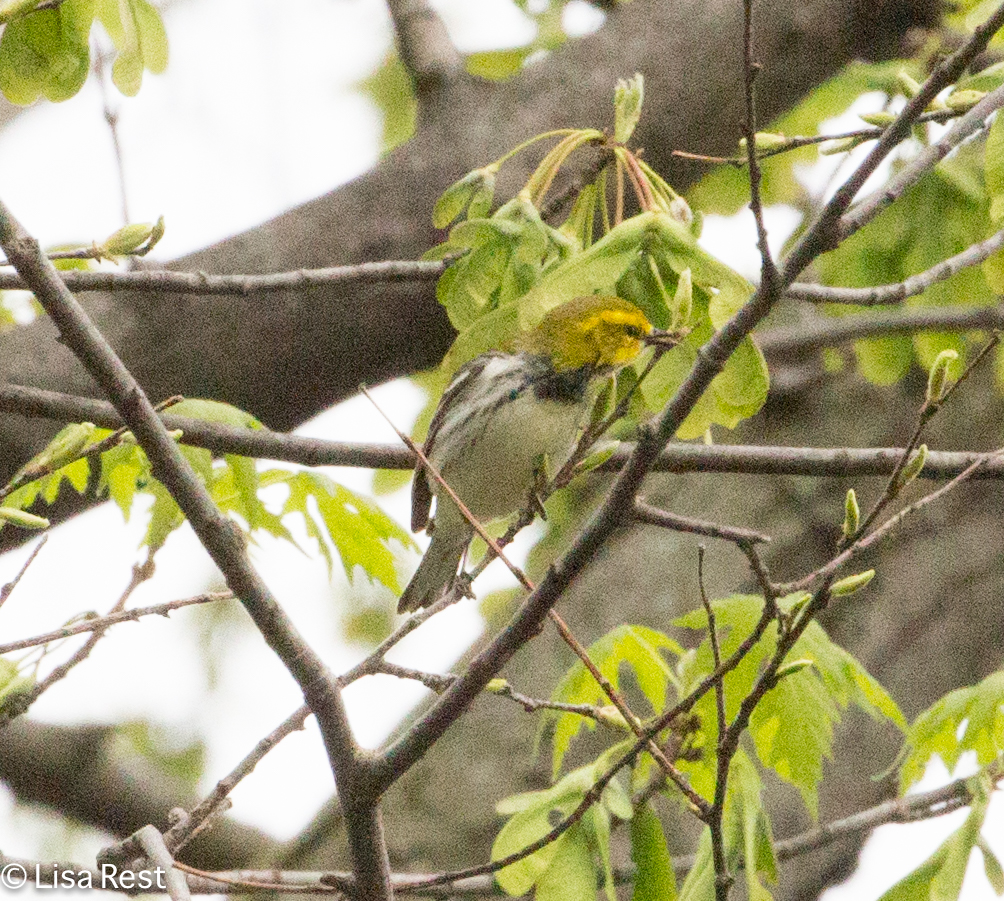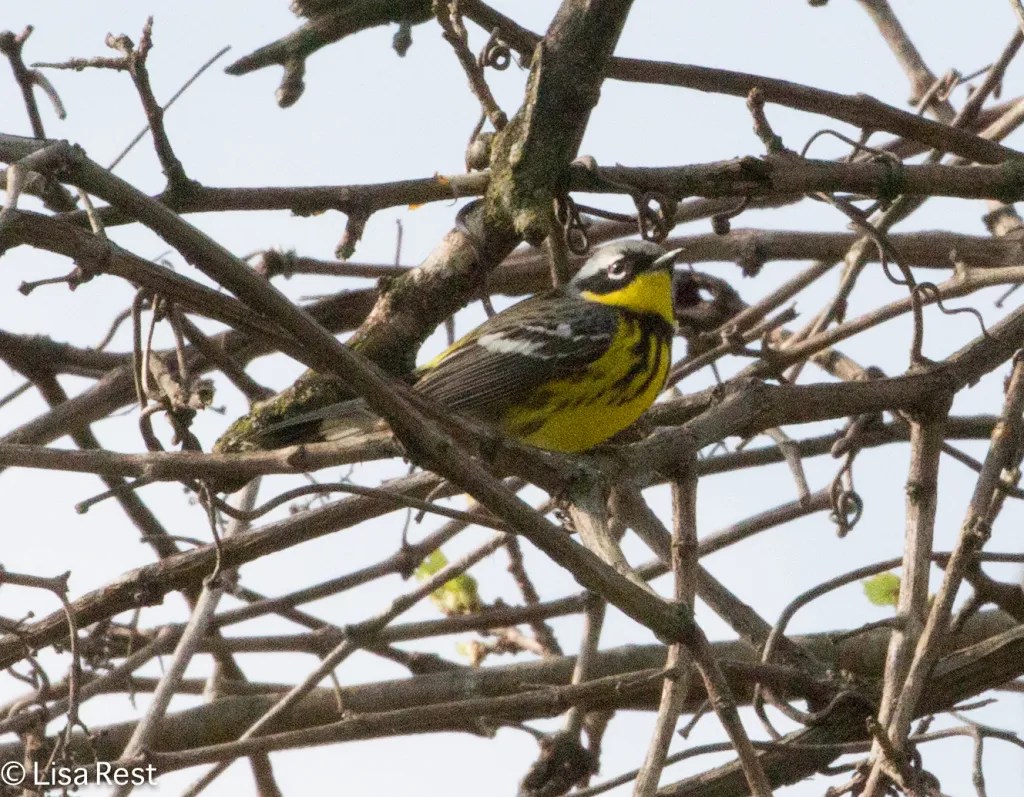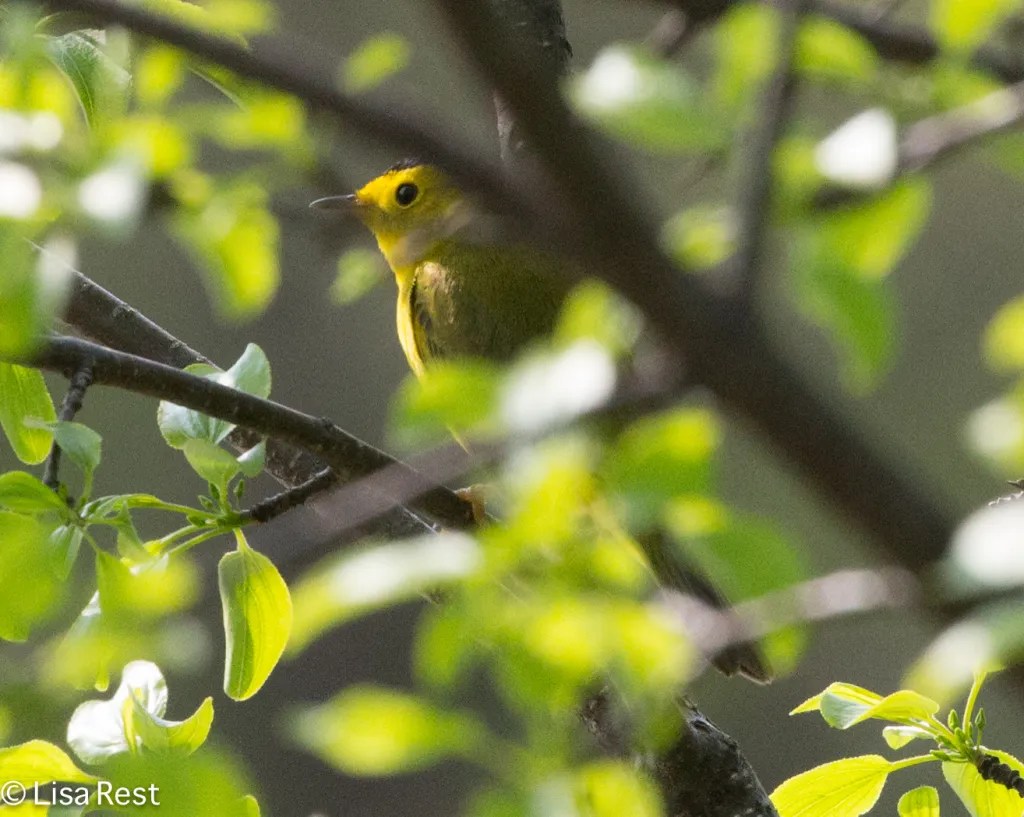
I’ve been trying to get caught up with the other warbler species I have seen this spring migration. Most exciting was the Hooded Warbler at the top of this post, which appeared at Columbus Park last Saturday. It had been seen by others, but I heard it still singing so I hung around where it likely was until I could find it with the camera. I haven’t seen one of these guys in some time, so I was really pleased.






Also seen on Saturday was a Wilson’s Warbler, who finally let me get a good look at his signature black cap.
At the Chicago Portage earlier on May 9, there were Golden-winged Warblers, a Blue-winged Warbler, and more Nashville and Black-throated Green Warblers than I have seen since. They arrived right before the big windy warmup that caused the fallout the next day along the river.

I took too many photographs of the Golden-winged. I apologize but this species is less frequently seen.




One bird was foraging along with a Nashville Warbler.
I think the bird below is a female.




Here’s one more with the Nashville and flowers still on the tree.

Nashville Warblers were common earlier but were way up in the tree tops.




The Nashvilles were in good numbers.
I managed to photograph a Blue-winged Warbler on the same day. I haven’t seen one since. I still have fond memories of seeing many of them a couple years ago.




There were some Black-throated Green Warblers at the Portage as well. I haven’t seen them too much this spring, but they were all over the place in the fall.
A few more…





Lately the most prevalent species has been Blackpoll Warbler. It has been relatively easy to distinguish their calls and then find them.

I have seen a few of these again since last Saturday but these photos are all the same individual.





I nearly forgot the Nashville Warblers from May 9. They didn’t stand out too much in that light.





Apologies for being quiet on this page for a while. I have unwittingly succumbed to a breakthrough infection which I can’t trace, of course, to anything specific although I have my suspicions. After two plus years of doing what I was supposed to do, getting the vaccines and masking up and socially distancing etc., etc. this is almost an affront to my sense of self. On the other hand, why not me? As mutations continue to make the virus harder to resist and restrictions are lifted, I can only count my blessings: I am not very sick, I live alone with my birds and I feel better every day. My energy is returning rapidly. I can be well and still take too many photos and start to nod off processing them. I am extremely grateful I managed to take these photographs of spring warbler migration before I got sick. There are lots more photos of warblers and some other birds to come. I hope you are staying safe and well.





































































































































































































































































































 Suffice it to say that the lure of fall migration is irresistible, especially with nice weather. The birds are taking advantage of the calm skies in this part of the country as well. I have been going back to the park every day this week and as of Tuesday all these birds seem to have left and no new ones have come in. I would like to think they all took off Monday night, navigating well out of the city and continuing their trips to Central and South America.
Suffice it to say that the lure of fall migration is irresistible, especially with nice weather. The birds are taking advantage of the calm skies in this part of the country as well. I have been going back to the park every day this week and as of Tuesday all these birds seem to have left and no new ones have come in. I would like to think they all took off Monday night, navigating well out of the city and continuing their trips to Central and South America. I’ll have lots more to report if I can manage it. Hope you are having decent weather wherever you are.
I’ll have lots more to report if I can manage it. Hope you are having decent weather wherever you are.









 Except for the bird perched in the oak tree below, this Nashville Warbler was foraging radiantly at the Chicago Portage on September 30.
Except for the bird perched in the oak tree below, this Nashville Warbler was foraging radiantly at the Chicago Portage on September 30.




 The last of the American Redstarts to come through were girls.
The last of the American Redstarts to come through were girls.








 We’ve had some rain now, temperatures are still warm during the day although falling blissfully at night, doesn’t look like we’ll be hitting the 80’s again as the days are getting shorter… But the sunshine was surprisingly warm yesterday around 10:00 AM. I’ll be back soon with new discoveries from the Chicago Portage.
We’ve had some rain now, temperatures are still warm during the day although falling blissfully at night, doesn’t look like we’ll be hitting the 80’s again as the days are getting shorter… But the sunshine was surprisingly warm yesterday around 10:00 AM. I’ll be back soon with new discoveries from the Chicago Portage.










 I wonder if the Common Grackle below could be a molting adult, without its long tail.
I wonder if the Common Grackle below could be a molting adult, without its long tail. Magnolia Warblers have been coming through for weeks.
Magnolia Warblers have been coming through for weeks.






















 On the 29th I saw this presumably female Wilson’s Warbler, below, at Lake Shore East Park, and am glad I had pictures to prove it to ebird – apparently it’s late in the season to see a Wilson’s. Others reported seeing them too, in the area.
On the 29th I saw this presumably female Wilson’s Warbler, below, at Lake Shore East Park, and am glad I had pictures to prove it to ebird – apparently it’s late in the season to see a Wilson’s. Others reported seeing them too, in the area.








